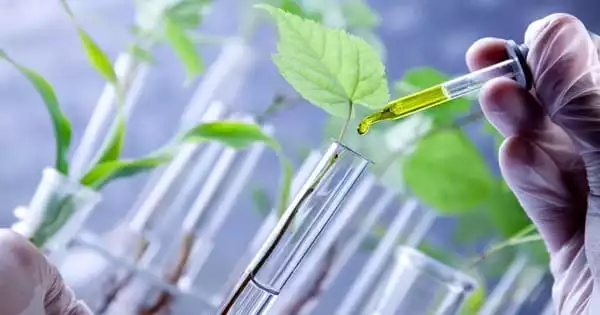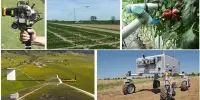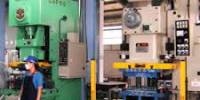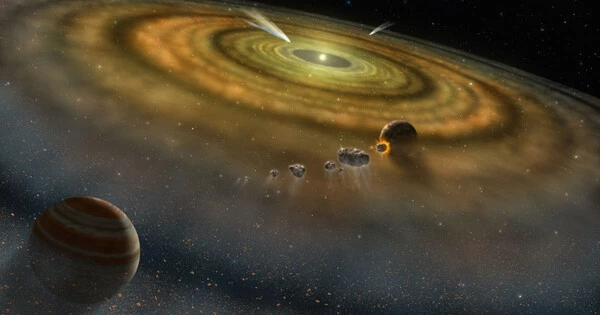Stephan Reuter, a physicist at Polytechnique Montréal, spends much of his days leveraging his knowledge of energy and matter to develop medical devices. He did, however, stand in a sea of green recently to explore how a rain of charged particles may affect lettuce.
He’d been invited to one of Quebec’s largest commercial greenhouses to assist growers in rethinking agricultural energy. Thousands upon thousands of lettuce plants floated on polystyrene mats in a hydroponic, or no-soil, growing system within the facility, which was surrounded by glass walls and covered more territory than four soccer fields. The crop was almost ready to be harvested, packaged, and shipped. Reuter’s objective was to apply physics to help the Mirabel-based company, Hydroserre Inc., lower its carbon impact.
To that aim, the business is looking for novel ways to combat diseases and deliver fertilizer to growing plants. Many fertilizers contain ammonia, which is produced through a chemical reaction known as the Haber-Bosch process from nitrogen (necessary for plant growth) and hydrogen. This process transformed agriculture in the early twentieth century by enabling bulk fertilizer manufacture. However, the process produces hundreds of millions of metric tons of CO2 per year.
“Ideally, we’d like a renewable fertilizer,” Reuter explains. And, to be genuinely green, it should be produced on the farm, eliminating the need for transportation, another carbon emitter. Reuter and a rising number of chemists, physicists, and engineers believe they can figure out how to do it. These experts are striving toward completely sustainable farms, where energy from renewable sources such as wind or solar is harnessed to produce an efficient fertilizer on-site. They hope to fulfill this idea through the use of plasma.
Plasma everywhere
Reuter may appear to be an unusual counselor for an agricultural problem. After all, he specializes in plasma physics, one of the four fundamental states of matter, along with solids, liquids, and gases.
Plasma is extremely prevalent. According to astrophysicists, most stuff is seen in the known universe — more than 99.9 percent — is in a plasma form. Plasma is created by lightning. So do the low-cost novelty lamps seen at museum gift stores. When you turn on the power, an electrode in the middle of the sphere generates a high voltage, which reacts with the gas contained inside the glass to form tendrils of colored plasma that radiate outward. When you touch the glass, the plasma tendrils appear to grasp for your fingers.
Even in this very, very early stage of research that we’re at with plasma, which has really only come into its own in the last 10 to 15 years, we’re seeing very promising data. The challenge now, is to figure out whether plasma can deliver at the level of hectares of crops.
Brendan Niemira
The sun is a ball of plasma and gas. The solar wind is a stream of plasma that peels off the sun. When that wind collides with the protective, plasma-rich magnetic cushion that envelopes Earth, the interactions produce rivers of light seen in the aurora borealis and aurora australis.
Plasma is also a current technological workhorse. Engineers utilize it to etch the millions of tiny transistors found on today’s computer chips, automobiles, and musical birthday cards. Plasma television pixels contain gas that generates plasma, enclosed inside tiny cells between two glass plates, and neon signs and fluorescent lights illuminate as a result of plasma. Some ex-astronauts even anticipate that plasma engines will one-day transport humans to Mars.
But, exactly, what is plasma? It’s a soup of electrons with negative charges, positive ions, and neutral atoms that generates electromagnetic fields as well as ultraviolet and infrared radiation. Plasma is formed when a gas is super-energized — for example, by heat or an electric current — and electrons are liberated from atoms.
Plasmas can arise naturally or be created artificially. When plasma is created at high temperatures, such as in the sun, it is referred to as “hot plasma,” whereas plasma made in a plasma ball and other room-temperature, low-pressure conditions is referred to as “cold plasma.” Plasma balls are visible because they are filled with a gaseous mixture including one of the very stable, noble gases, such as argon, xenon, neon, or krypton. Plasma is responsible for the luminous tendrils that extend from the core. The high-frequency current excites electrons, which detach from gas atoms. Many agricultural experiments use a mixture of noble gases and air to produce nitrogen and oxygen ions.
Scientists have long been interested in plasma’s biological implications. In the late 19th century, the Finnish physicist Karl Selim Lemström observed that the width of growth rings in fir trees near the Arctic Circle followed the cycle of the aurora borealis, widening when the northern lights were strongest. He hypothesized that the light show somehow encouraged plant growth. To artificially emulate the northern lights, he placed a metal wire net over growing plants and ran a current through it. Under the right conditions, he reported, the treatment produced larger vegetable yields.

Scientists have known for decades that exposure to plasma can safely kill dangerous bacteria, fungi, and viruses. Small animal studies also suggest that plasma can stimulate the formation of blood vessels in the skin. Reuter’s research looks into ways to use these qualities to prevent new infections in wounds, speed up healing, and cure other skin diseases. However, he and other physicists have recently begun working on ways to exploit plasma’s power to boost food production.
Experiments over the last decade or so have investigated a variety of methods for applying plasma to seeds, seedlings, crops, and fields. These include plasma produced by noble gases as well as plasma produced by air. In some cases, plasma is directly applied through plasma “jets” that stream over the seeds or plants. Another approach uses plasma-treated water that can do double duty: irrigation and fertilization. Some studies have reported a range of benefits, from helping plants grow faster and bigger to resisting pests.
“Even in this very, very early stage of research that we’re at with plasma, which has really only come into its own in the last 10 to 15 years, we’re seeing very promising data,” says plant pathologist Brendan Niemira at the Food Safety and Intervention Technologies Research Unit at the U.S. Department of Agriculture’s Eastern Regional Research Center in Wyndmoor, Pa. He’s a fan of the approach: On Zoom, Niemira’s avatar shows an almond basking in an eerie, purple plasma glow.
The challenge now, he says, is to figure out whether plasma can deliver at the level of hectares of crops. “Can we make it work in a field environment [to] deliver an advantage that can be integrated into grow systems in the future?”
Many other challenges are nested inside that one, such as developing a technique to transport plasma to plants on a big scale, validating benefits observed in lab research, and demonstrating that plasma is superior to present approaches. Finally, determining what the charged soup of plasma is doing to plants.
According to Niemira, recent breakthroughs were made feasible partly because scientists devised efficient and cost-effective methods to make cold plasmas by streaming high-energy electrons into a gas in the 1990s and early 2000s. When the electrons collide with gas molecules, they knocked electrons off and produced charged particles. Since then, he claims, there has been a rush to test plasma on plants at various phases of development and using a variety of tactics.
Surface changes
According to Reuter, one of the most tempting applications of plasma is as a fertilizer alternative to ammonia. His vision for the Mirabel greenhouse project, which he helped launch in spring 2021 alongside scientists from the Quebec-based organization IRDA, or Research and Development Institute for the Agri-Environment, is as follows: The plasma is created by passing an electric current through a gas, which is preferably merely air. This process generates a mixture of charged and neutral particles, including electrons and ions, which can yield reactive nitrogen and oxygen species. Reuter and his colleagues will enrich the water with plasma in tabletop studies and then in the greenhouse to see if it can minimize infections and affect developing plants.
Reactive species, as the name suggests, are ready to react with atoms and molecules, including those found in living organisms, and are thus biologically accessible to plants. Those reactive species dissolve when plasma is added to water. The resulting plasma-infused water will be utilized to irrigate the plants because it contains biologically accessible nitrogen. It will perform the same function as ammonia in that nitrogen, which plants require for growth, will be given in the form of ions, excited molecules, and compounds in the water. While high amounts of reactive species might harm plant cells or DNA, Reuter claims that the amount in plasma-treated water is harmless for the plant.
















